I shoot the 'A-roll' for my YouTube videos with a Sony a6000 and a small Glide Gear TMP 75 smartphone teleprompter:
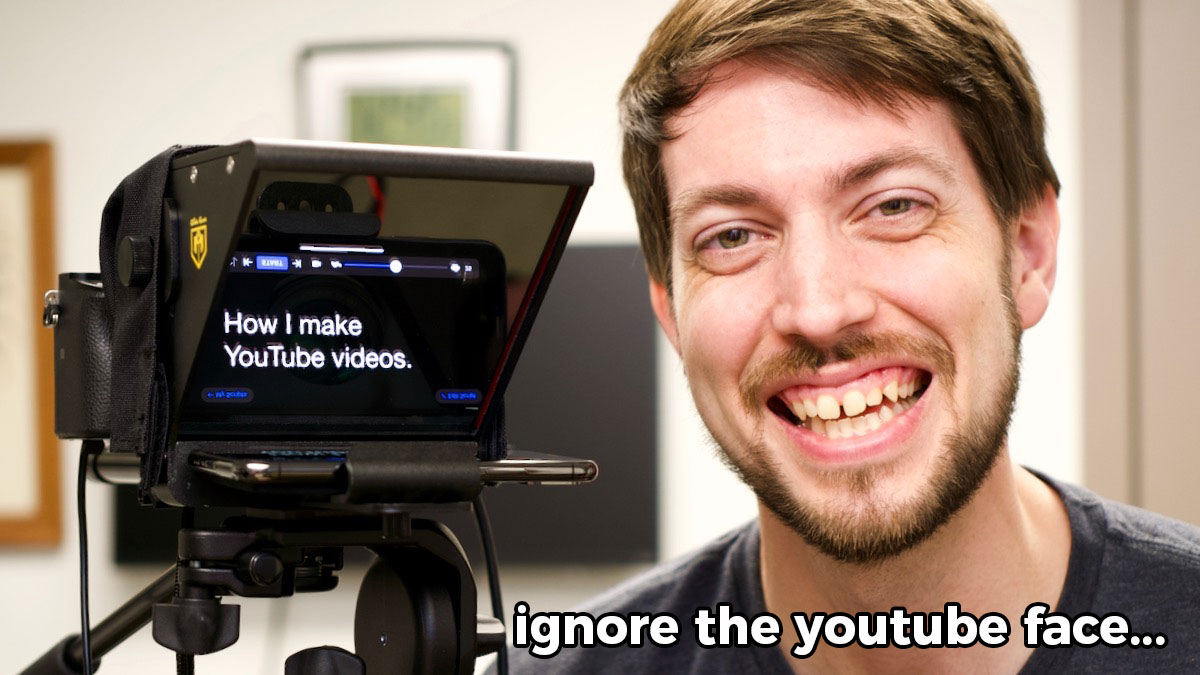
Until recently, I had these mounted on a tripod just off the back corner of my desk:
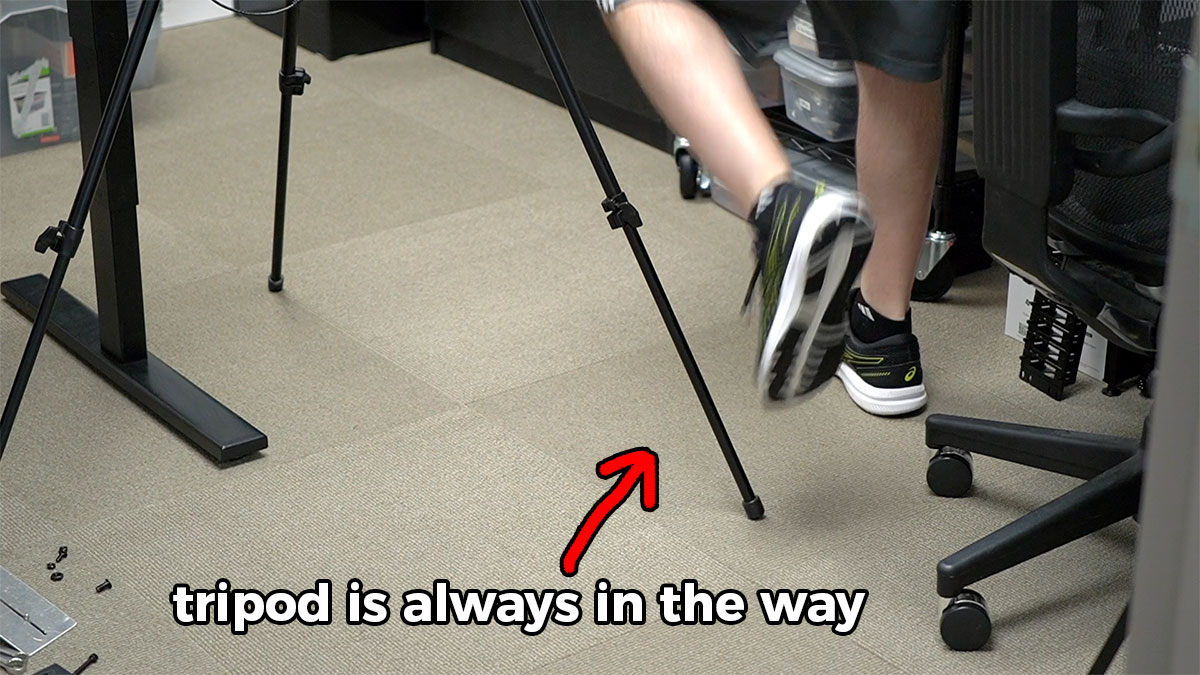
Some people mount semi-permanent camera rigs on a pole on their desks (example), but my adjustable-height desk (by UPLIFT) is not rock solid, so sometimes when I'm typing or accidentally bump the desk, anything mounted to the desktop wobbles.
For lights, monitors, etc., a little wobble isn't a problem. But even with image stabilization in my camera, the wobble becomes noticeable if I have the camera physically attached to my desk.
So I've been using a tripod. Only problem is my little 12' x 12' office is not set up to be a YouTube studio. I built it in 2014, and at the time video production was not even on my radar.
Idea: TV Ceiling Mount
I stopped looking at dedicated camera mounting arms and truss systems once I realized they'd cost at least a couple hundred dollars—and the low end of the price range includes the weaker systems that I wouldn't trust with my $1000 camera rig!
Having mounted many TVs before, I realized TV ceiling mounts are cheap, sturdy, and available darn near everywhere. I bought this VideoSecu ceiling TV mount for $37, and decided there must be a way I could hack together some sort of rigid mounting plate for it, with a platform for the camera and a tripod screw underneath.
Here's what the base of the mount looks like without the VESA mounting adapter plate attached:
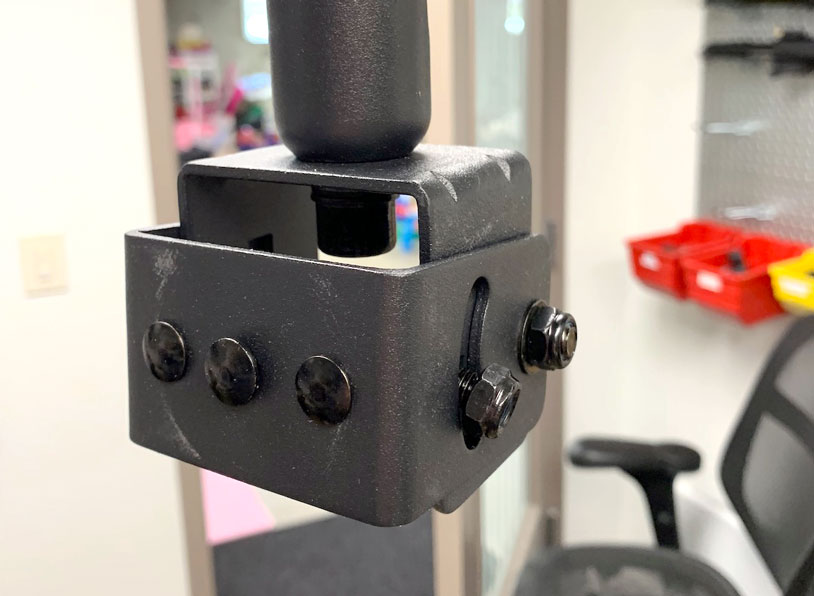
Can I 3D Print it?
I initially considered a fully-3D-printed mount, with a lot of support material and a large amount of infill. I've dialed in my 3D printing setup now, and am confident I could get a good print. But I just won't trust a 5 pound camera rig on a plastic printed part.
I knew metal was the best option, but I didn't know how I'd make a bracket thick enough with the tools I had.
I have a small sheet metal folding tool and some aviation snips, but I can only use that on relatively thin metal—16 gauge, or about 1.5mm. I would need at least 3mm if I wanted to be confident in the strength of my bracket.
Designing the part in OpenSCAD
I used a sheet of paper and made up a template for what I wanted the final plate to look like:
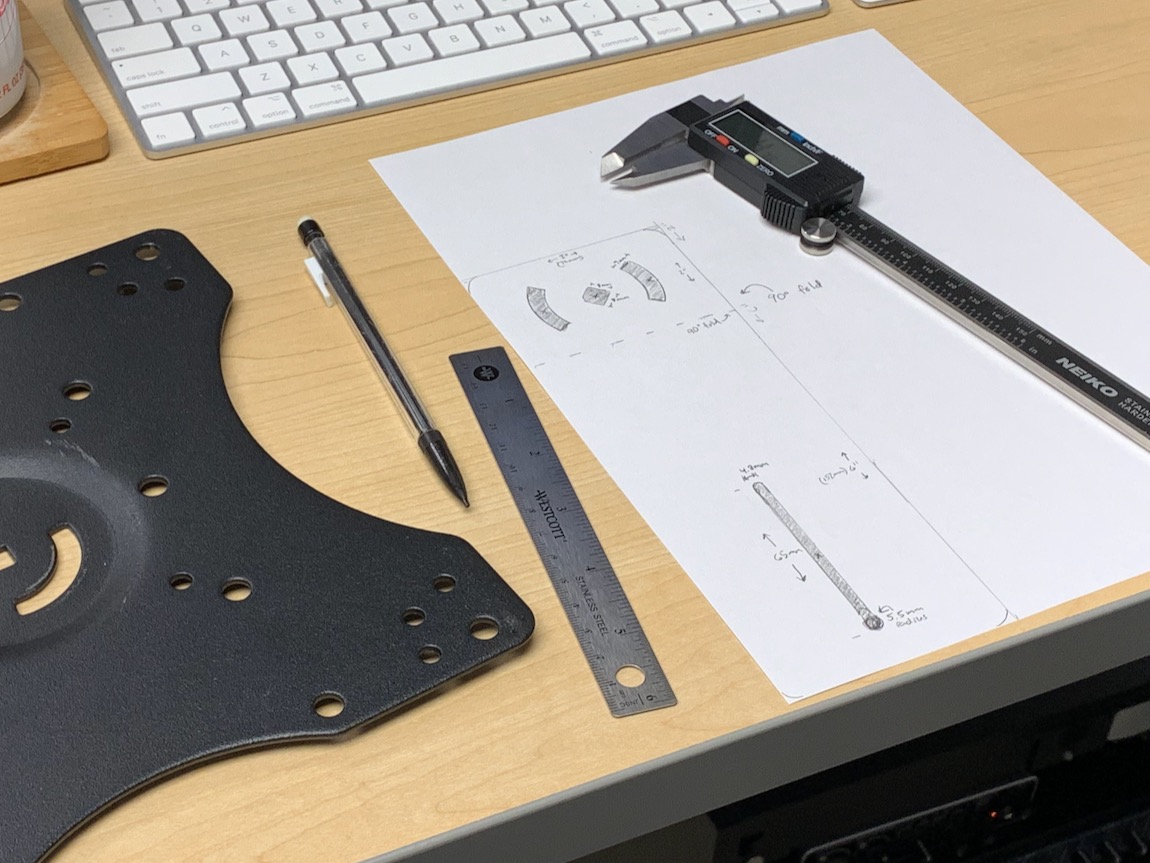
I wanted a lot of adjustability, so I decided:
- The tripod screw would be in a long channel, so the camera could be mounted closer or further from the ceiling mount pole—essential for potential upgrades to a larger teleprompter or camera in the future.
- The mounting screws would have an arc so the whole mount could be tilted forward or backward, allowing many axes of adjustability once everything's mounted up.
I decided to use OpenSCAD to do the modeling, since it's open source and it lends itself to quick designs for simple parts like this.
After a couple hours, I was satisfied I had captured the dimensions for the plate:
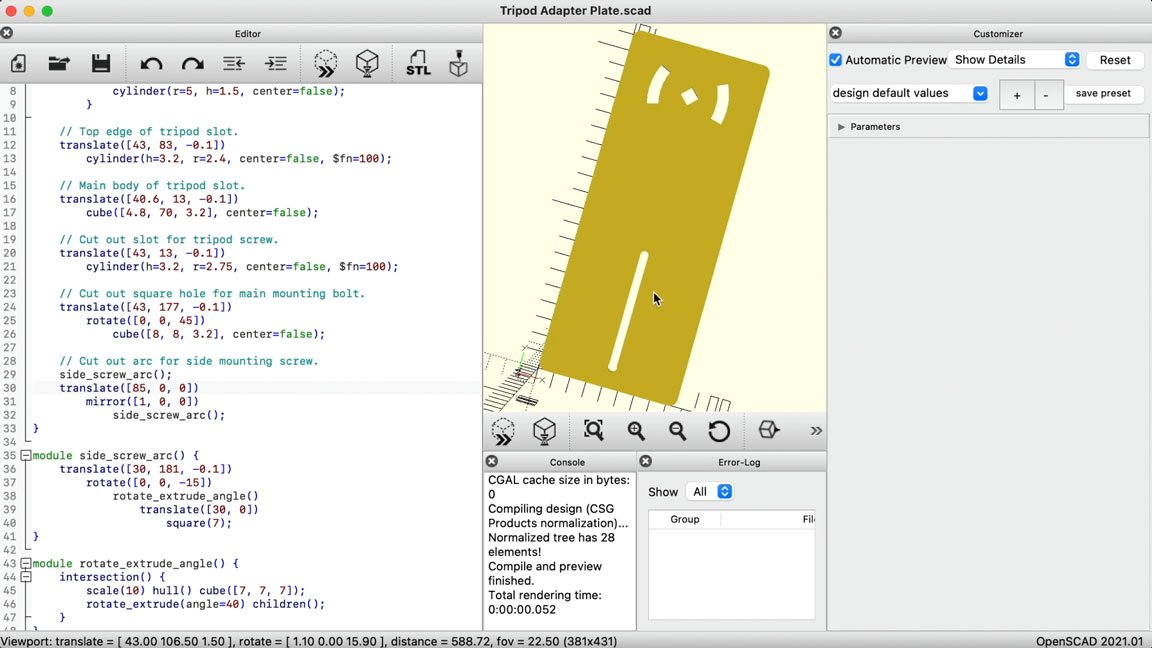
I also opened it up in Meshmixer to quickly plane cut the part and 'bend' it virtually so I could see what the final part would look like—assuming I found a way to bend 3mm steel!
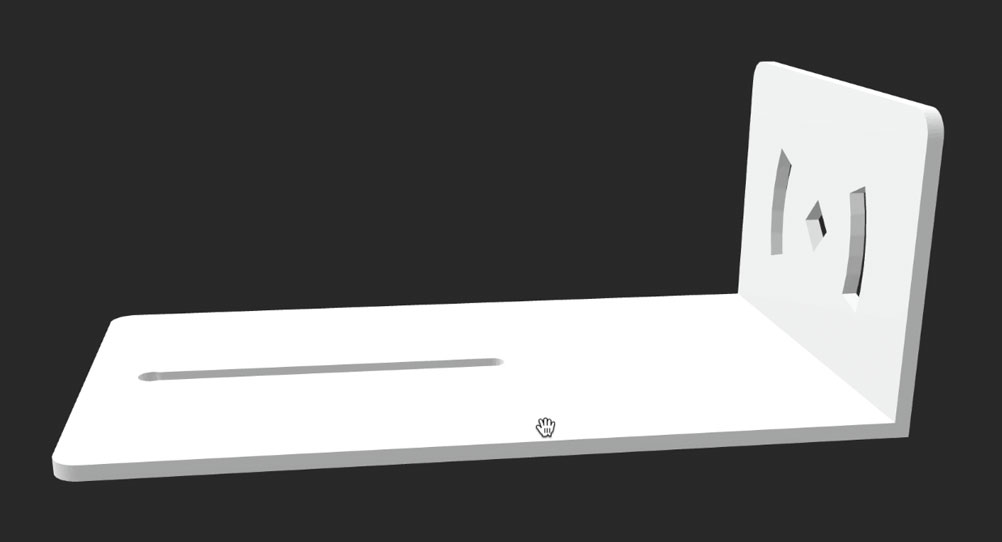
Since I have a 3D printer, I decided to print the final result for a dry-fit, and it fit great:
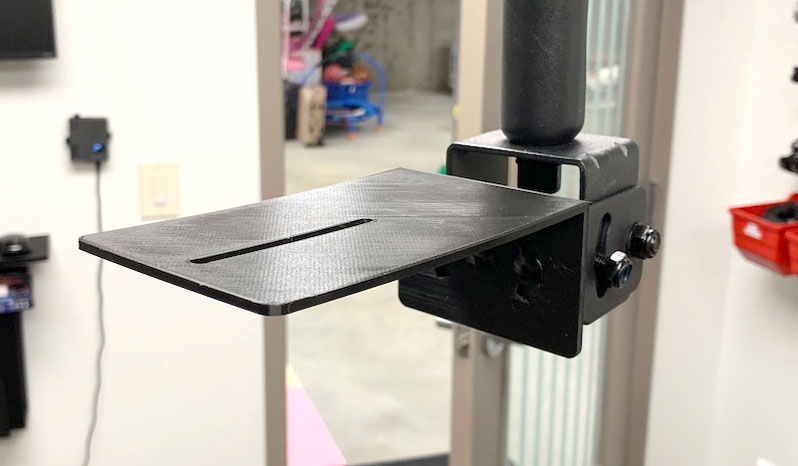
But it was definitely not sturdy enough for a camera rig!
Getting it MADE
At this point, I was exploring the possibility of buying a brake rated for 3mm steel, but found the options (at least for quality equipment I'd be able to use for years) too expensive to justify. I also didn't have a solution for cutting the steel that didn't involve a lot of painful abuse of my power tools meant more for woodworking.
So I asked on Twitter, and Sam Wronski pointed me to MADE, a local makerspace in St. Louis—I had no clue we had anything like it, besides Arch Reactor!
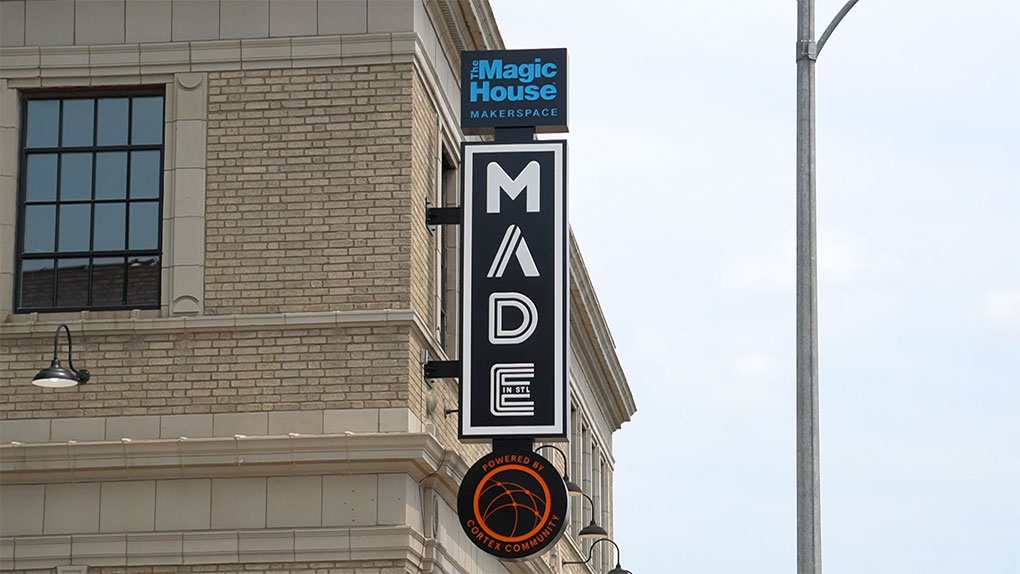
When I looked at their equipment list, I spotted the two machines I needed:
- A waterjet capable of cutting any flat shape out of darn near any material.
- Industrial-sized brakes capable of bending any of the sheet steel I could imagine using.
To use the machines, I'd need to take a training and become a member, but I wanted to get this done quickly so I could get the tripod off my office floor, so I opted for a special service they offer called Custom MADE.
My project was so simple it's almost a joke compared to the elaborate projects they often take on, but it is really nice to be able to take an idea and project description, pay someone a little money, and have a working part within a short time.
And so that's what I did, and I have a whole video about the process on my YouTube channel:
After the part was made, I tapped a 1/4"-20 hole in it with my humble little Irwin set, and put in a tripod screw from my SmallRig tripod screw kit.
I mounted the bracket on the arm, and mounted the camera and teleprompter to it. At the same time, I also mounted my microphone (a Sennheiser MKE 600 shotgun) to the pole using a Manfrotto Super Clamp and Articulated Arm, and now my entire recording setup is up in the air, out of the way, ready at a moment's notice:
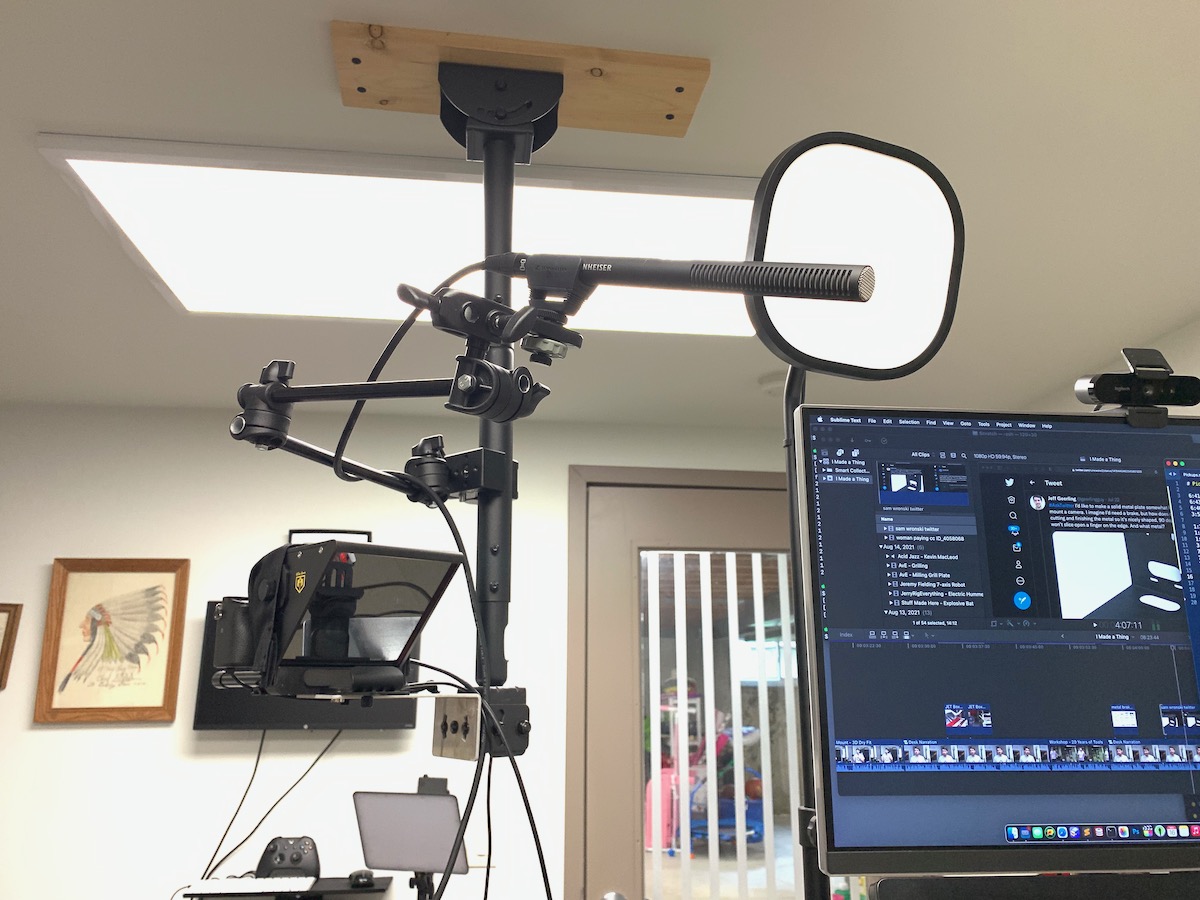
The 3D bracket file and OpenSCAD source are on Thingiverse, so anyone else who might want to build a similar ceiling-mounted camera rig could do so... though you'd need to access a waterjet and metal brake if you want to make it out of sturdy metal!
Comments
FYI:
Small sheet metal parts can be quickly made and purchased online from OSHcut or SendCutSend.
Typically they’ll require a .dxf or .step file and a credit card, and you’ll get your parts a week or two later